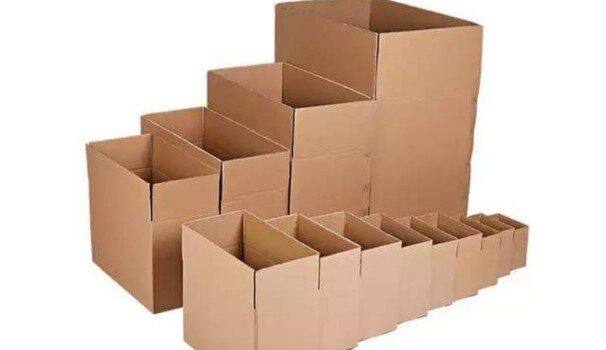
In the world of packing, efficiency is key. Whether you’re shipping a single item or a whole inventory, understanding and utilizing box dimensions correctly can make a significant difference. It saves you money on materials, optimizes space utilization, and ensures your items arrive safely at their destination.
Understanding the Lingo: Box Dimensions Demystified
Before diving into the practicalities, let’s clarify the key terms:
- Box dimensions: This refers to the length, width, and height of a box, usually expressed in units like inches or centimeters.
- Length: The longest side of the box, typically measured from the opening.
- Width: The shortest side of the box, measured perpendicular to the length.
- Height: The distance from the bottom of the box to the top, measured when the box is standing upright.
Knowing the order is crucial: L x W x H is the standard format for describing box dimension’s length, width and height.
Measuring a Box: Getting the Numbers Right
Accurate measurement is essential for selecting the perfect box. Here’s how to measure a box:
- Gather your tools: You’ll need a measuring tape or ruler.
- Lay the box flat: Place the box on a flat surface with the opening facing up.
- Measure the length: Measure the longest side, from one end of the opening to the other.
- Measure the width: Measure the shortest side, perpendicular to the length.
- Measure the height: Stand the box upright and measure the distance from the bottom edge to the top edge.
Remember, always measure the inner dimensions of the box, not the outer dimensions including flaps or handles.
Selecting the Right Box: The Power of Fit
Choosing the right box size is crucial for efficient packing. Here are some key considerations:
- Minimize empty space: Aim for a snug fit that minimizes empty space within the box. Loose items can shift during transit, increasing the risk of damage.
- Leave room for cushioning: Allocate some space for protective materials like packing peanuts or bubble wrap, especially for fragile items.
- Consider weight limitations: Ensure the box you choose can withstand the weight of your packed items. Exceeding weight limits can damage the box and compromise its integrity during shipping.
By following these guidelines, you can select boxes that are both space-efficient and offer optimal protection for your valuables.
Packing Like a Pro: Mastering the Art of Space Utilization
Once you have the right box, it’s time to pack efficiently. Here are some pro tips:
- Use the right packing materials: Choose appropriate cushioning materials based on the fragility and weight of your items.
- Fill empty spaces: Strategically use packing materials like crumpled paper or bubble wrap to fill any voids within the box and prevent items from shifting.
- Distribute weight evenly: Distribute heavier items at the bottom for stability and place lighter items on top.
- Utilize the box’s shape: For oddly shaped items, consider using a combination of smaller boxes or internal dividers to maximize space utilization.
Utilizing Technology for Efficient Packing
In today’s digital world, technology offers valuable tools to enhance your packing efficiency. Here are some ways to leverage technology:
- Online box size calculators: Many online retailers and shipping companies offer box size calculators. These tools allow you to enter the dimensions of your items, and the calculator recommends suitable box sizes based on your specifications.
- 3D packing software: Advanced 3D packing software allows you to virtually pack your box, optimizing space utilization by creating a digital representation of your items and the box. This can be particularly beneficial for complex or oddly shaped items.
- Mobile packing apps: Several mobile apps can guide you through the packing process, offering tips on box selection, packing techniques, and even shipping cost estimation.
These digital tools can save you time and effort, leading to more efficient and cost-effective packing. To read more blogs click here:https://rapidglimpse.com/
Environmental Impact: Choosing Sustainable Boxes
When selecting boxes, consider the environmental impact. Here are some ways to be eco-friendly:
- Reusing boxes: Whenever possible, reuse sturdy boxes in good condition. This reduces waste and minimizes your environmental footprint.
- Choosing recycled content boxes: Opt for boxes made from recycled materials, which helps conserve resources and promotes responsible manufacturing practices.
- Right-sizing your boxes: Selecting the right box size prevents the use of excessive packaging materials and reduces the overall environmental impact of your shipment.
By making conscious choices about the materials and sizes of your boxes, you can contribute to a more sustainable future.
Conclusion: Packing Efficiency – A Skill Worth Mastering
Mastering the art of box dimensions and efficient packing offers numerous benefits. You can:
- Save money: By selecting the right-sized boxes and minimizing wasted space, you can reduce your overall packaging and shipping costs.
- Enhance protection: Packing efficiently ensures your items are well-protected during transit, minimizing the risk of damage and potential returns.
- Reduce your environmental footprint: Choosing sustainable box materials and right-sizing your shipments contribute to a more eco-friendly approach to packing.
By understanding box dimensions, employing efficient packing techniques, and leveraging available technology, you can transform your packing process into a smooth, cost-effective, and environmentally responsible experience. Packaging manufacturer is committed to providing you with high-quality, sustainable packaging solutions and resources to help you navigate the world of efficient and responsible packing.









Comments
Best-Selling & Trendy Watches for Kids You Must Buy This Season